You’ve probably seen drug-sniffing dogs at the airport, and you may be vaguely aware that there are bomb-sniffing dogs working overseas, but did you know there are a variety of tasks military dogs are trained for? Some dogs are trained for only one purpose, but some are trained for 2 or more. Here are 9 types of modern military dogs.
Single-Purpose
Single-purpose dogs are trained to do one thing and do it well.
#1 – Narcotics Detector Dog (NDD)

Scent-detecting dogs are trained to detect drugs or explosives, never both, so handlers don’t have to guess which the dog is alerting to.
NDDs sniff out a wide variety of drugs, no matter how well they’re concealed. They’re typically used at airports, checkpoints, and borders. Retrievers are the preferred breeds for drug or explosive detection dogs.
#2 – Explosive Detector Dog (EDD)
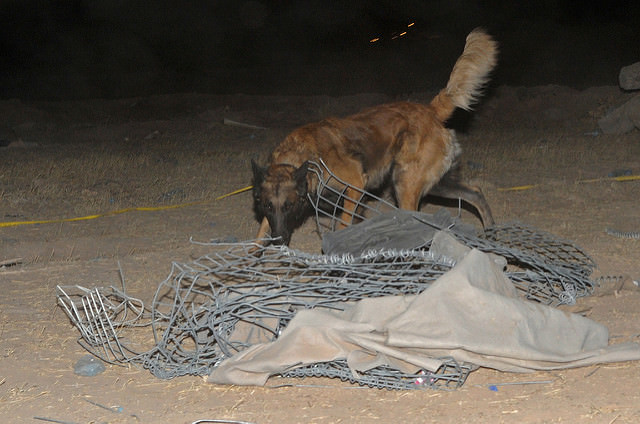
EDDs can detect even small amounts of a wide variety of explosives. They are frequently used for searching entry points, patrolling within secure installations, and at checkpoints. They’re handled by military police in all branches of the military.
#3 – Specialized Search Dog (SSD)
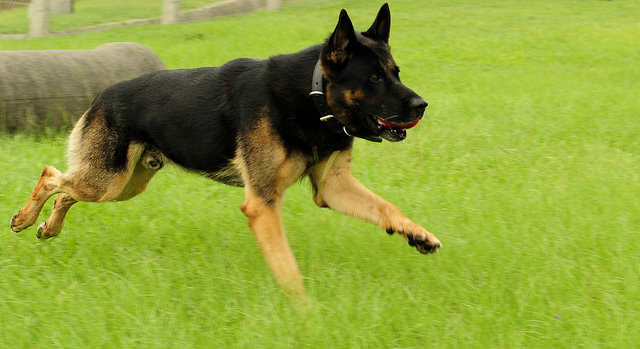
A step beyond EDDs, SSDs are trained to work off leash long distances from their handler to find explosives. They usually work by hand signals, but in the Marines they can also receive commands via radio receivers they wear on their backs. German Shepherds and Belgian Malinois are the typical breeds for this type of work.
#4 – Mine Detection Dog (MDD)
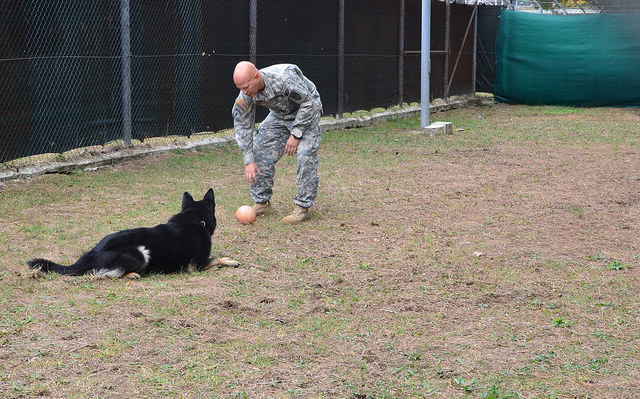
An Army program, MDDs perform slow and steady off-leash searches for buried mines and artillery. The preferred breeds for this work are Labs, Shepherds, and Malinois.
#5 – Combat Tracker Dog (CTD)
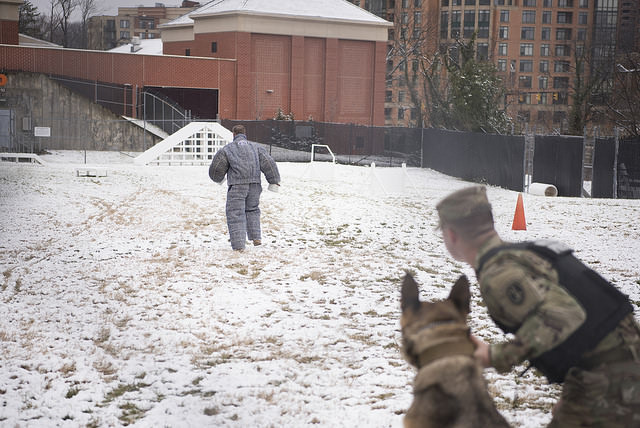
Beyond just locating IEDs and weapons caches, CTDs are trained to track down the person who stashed the explosives. In this Marine program, the dogs usually work on retractable leashes. Although categorized by the military as single-purpose dogs, they perform more like dual-purpose dogs.
Dual-Purpose
Dual-purpose dogs detect either drugs or explosives and also do patrol work such as protection. They may also do some basic scouting. Dual-purpose dogs are usually German Shepherds, Belgian Malinois, and Dutch Shepherds from European blood lines that may be mixed with other breeds to reduce common genetic problems.
#6 – Patrol Explosive Detector Dog (PEDD)

The backbone of the war dog program, PEDDs are used by military police and other law enforcement across all branches of the military. On top of sniffing out bombs, they do patrol work and have some basic scouting abilities.
#7 – Patrol Narcotics Detector Dog (PNDD)
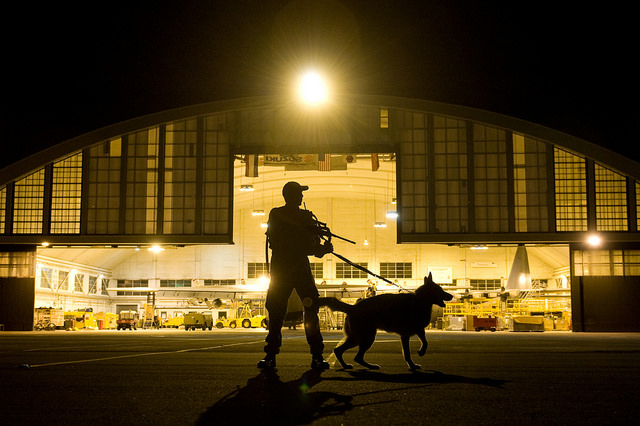
Used in the Army, Navy, Air Force, and Marines, the PNDD is the drug-sniffing counterpart to the PEDD.
Multi-purpose
#8 – Multi-Purpose Canine (MPC)
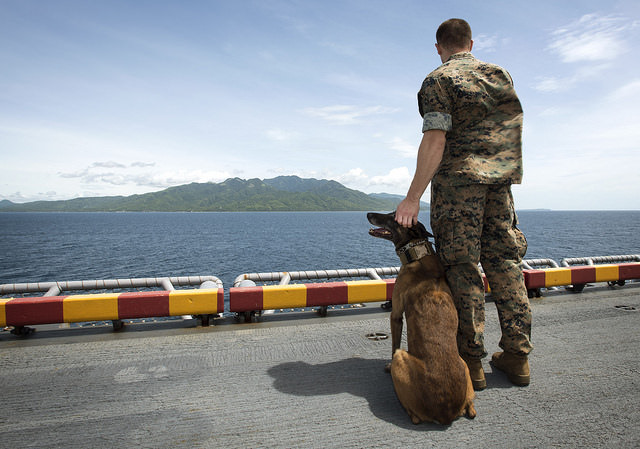
Used exclusively by Special Operations Personnel, MPCs do everything PEDDs do and may be used in parachute or rappel operations. They sometimes use highly specialized canine equipment such as waterproof tactical vests and night-vision cameras so handlers can see what the dog is seeing as they work from a distance. They’re almost unflappable, even in the most extreme environments.
#9 – CIA K-9 Corps
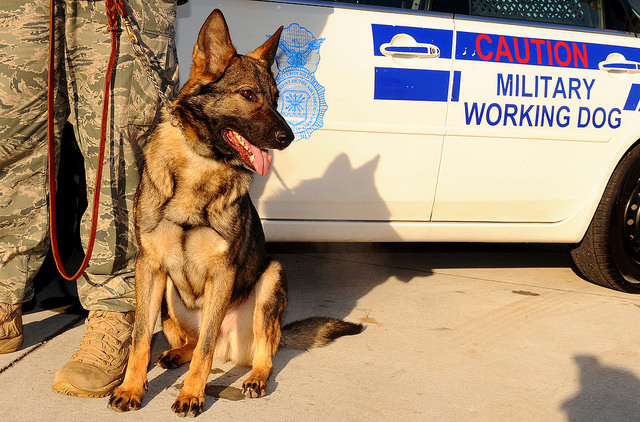
These dogs are basically MPCs that work with the CIA. They learn how to detect 19,000 explosive scents and how to patrol. They’re trained to guard the people of the CIA and often work in conjunction with other law enforcement teams. They helped guard the 2002 Super Bowl in New Orleans and the 2002 Paralympics Winter Games in Salt Lake City.
Retirement
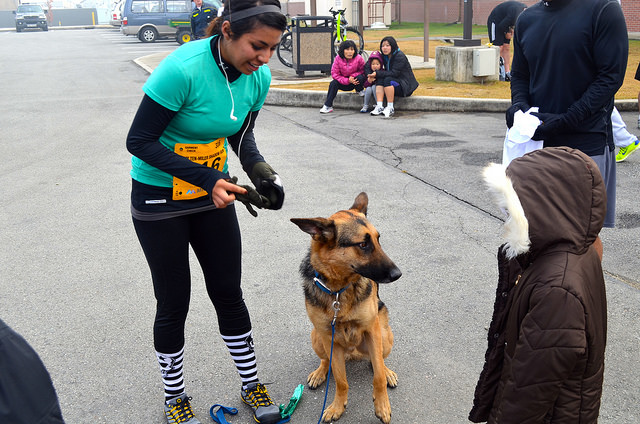
In 2000, Congress introduced the Robby Law, which allowed working dogs to be adopted instead of being euthanized at the end of their working careers. These dogs are frequently adopted by their handlers but may be adopted by private citizens who understand the importance of routine and discipline in the dog’s life. The dogs are not allowed to be used in any service capacity once they retire from military work.
Learn more about military dogs at The United States War Dog Association, Inc!
 Toledo, United States.
Toledo, United States.